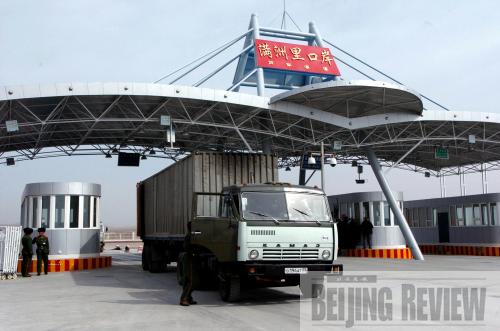|
1978-91: Attempts in the early stages of reform and opening up. With the reform of foreign trade management mechanisms and implementation of more flexible trading, China's foreign trade developed rapidly. Overseas investment and the establishment of special economic zones reenergized the development of China's foreign economic and trade relations, and manufactured goods became China's major exports.
During this period, the government attached unprecedented importance to foreign trade. Reform of foreign trade mechanisms and foreign direct investment greatly promoted the sector's development. From 1978 to 1991, the country's trade volume grew from $20.64 billion to $135.6 billion. Of this, exports rose from $9.8 billion to $71.8 billion and imports from $10.9 billion to $63.8 billion, with respective average annual growth rates reaching 16.6 percent and 14.6 percent.
 |
|
BUSY PORTS: As important infrastructure and a gateway to open north China, Tianjin Port is the epitome of the country's reform and opening up over the past 30 years (WANG GUANGRONG) |
In an effort to attract capital, technology and equipment, expand international market channels, create foreign exchange income and increase job opportunities, the State Council approved coastal areas to develop processing trade in 1979. A new round of international industrial structural readjustment and transfer started in the mid-1980s. In order to take advantage of this favorable situation, China set a new development strategy for coastal areas focusing on processing trade and expanding exports of labor-intensive products, which helped boost the processing trade. China's successful transfer of labor-intensive industries through the processing trade stimulated domestic industrial development, promoted upgrades of export structure and realized the change of major exports from primary products and resources to industrial manufactured goods. In 1986, industrial manufactured goods replaced primary products and became China's major export commodities, realizing a fundamental change of the export structure. In 1991, industrial manufactured goods accounted for 77 of the country's total exports. Japan, Hong Kong, the United States and the European Community became the Chinese mainland's most important export destinations and trading partners, while trade with Russia and Eastern Europe declined significantly.
 |
|
BRIDGING TWO COUNTRIES: Manzhouli is China's largest land port. A truck from Russia passes through the Manzhouli port (REN JUNCHUAN) |
|
